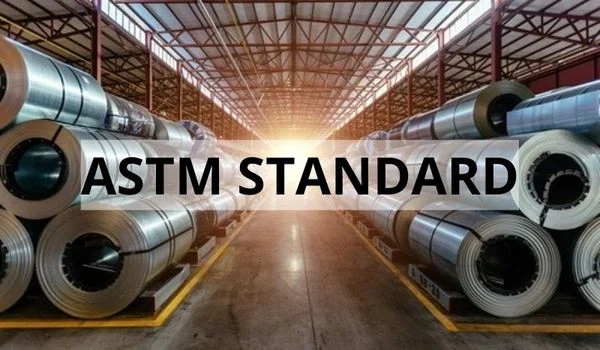Developing steel pipes is similar to performing in a well-danced dance. Every movement and every step has to be ideal for the final product to reach high-performance standards. That is when ASTM standards, such as AS 1074, come into play, directing manufacturers to perform reliable and high-quality production of steel pipes. Just as a dancer follows choreography, manufacturers follow the guidelines set by ASTM AS 1074 to ensure their steel pipes meet the required specifications, resulting in a final product that is strong, durable, and reliable.
But what are ASTM standards in this respect?
ASTM International, short for the American Society for Testing and Materials, is the one that sets the standards for how things are made. Standards are set to ensure safety, good quality, and efficiency from different materials to various products.
How Steel Pipes Are Manufactured
Steel pipes are used in most industries today, including construction, automotive, and oil exploration. Different stages have to be conducted for the pipes to achieve the desired specifications and standards during the process of making steel pipes.
1. Raw Materials Preparation
The product is manufactured using raw materials. The primary raw material of steel pipes is steel, mainly extracted from iron ore and coal, using a blast furnace. The steel produced would still need primary shaping to fit the desired form with the required composition and properties.
2. Forming
Seamless Pipes:
In the case of seamless pipes, a solid steel billet is hot-shape formed. This billet is heated at high temperatures and then pierced with a mandrel through the centre to form a hollow tube. This hollow tube is further elongated and rolled through to reduce the diameter and wall thickness to the required dimension.
Welded Pipes:
Making the welded pipe:
The welding pipe manufacturing involves steel strips or plates. First, the given raw material flattens and reshapes into a cylinder. At this stage, the edges are welded together by passing through different welding methods, including high-frequency induction and submerged arc welding. After welding, the seam is smoothed out and checked for quality.
3. Heat Treatment
It is even possible to use heat treatment on seamless and welded pipes to refine their microstructure further and develop their mechanical properties. The heat treatment includes processes like annealing or quenching and tempering, which depend on the steel grade and the sector of its application.
4. Cold Drawing or Cold Rolling
Some cold drawing or cold-rolling processes are applied to achieve seamless pipes’ proper dimensions and surface finish. In the cold-drawing process, the pipe gets pulled through some dies; this decreases its diameter and improves the dimensional accuracy of the pipe. The cold-rolling process is rolling, which brings these effects to the surface finish and even dimensional pipe consistency.
ASTM standards are the backbone of the industry dealing with steel pipes; they spell out to manufacturers what to base their steel pipes on so that every pipe they make is of reliable material and safe for use in any condition.
Quality of Material Endorsed by Standards of ASTM
Material quality is super important for steel pipes. The standards describe to the manufacturer what kind of steel—meaning how strong the steel is and what chemicals are allowed—so that the pipe can survive under really tough conditions without breaking. For instance, ASTM A106 describes making seamless carbon steel pipes that can survive high temperatures without becoming weaker.
How Pipes Are Made
Think of ASTM standards as a recipe for making steel pipes. These rules cover everything from shaping and welding the pipes to how they are heated and finished. Following these rules means manufacturers can make all the same high-quality pipes.
Checking Pipes Carefully
Well, you wouldn’t buy a car if you didn’t know it was safe to drive, would you? ASTM needs to test and check the steel pipes fully. This includes how strong, hard, and rough the pipes are.
Construction, oil and gas, and water treatment are just a few of the industries that would confirm what tough jobs pipes of steel could carry out according to ASTM standards.
Steel pipes are traded all over the world with much ease. ASTM standards make this easy because they give everyone a common set of rules. This means buyers and sellers miles apart can be sure of pipes with strong specifications.
Saving Money through Enhanced Efficiency
Following strict rules costs more but often saves money in the long run. ASTM standards help manufacturers avoid mistakes and make the process more efficient. This means less waste and better quality pipes.
Encouraging New Ideas
ASTM standards are always being updated with new technology and ideas. This helps manufacturers use new ways to make pipes better and stronger.
How ASTM Standards Help Different Industries
Construction
Steel piping is implicated in the structure of buildings and plumbing. The pipes will carry heavy loads and last a lifetime without rusting, so long as they follow the ASTM standards.
Oil and Gas
Oil and gas firms use steel pipes to convey oil and gas in safe transmission. The ASTM standards in the use of oil and gas support this conception since the pipes will cope with high pressure and hard conditions.
Water Treatment
Water and chemicals for water treatment are carried through steel pipes in factories designed for such treatment. The ASTM standards guarantee that these pipes will not rust and that their reactions will not interfere with the chemicals added to the water, hence witnessing clean water that is safe for drinking.
Automotive and Aerospace
Even vehicles such as cars or aeroplanes have greatly used steel pipes. This means that ASTM standards guarantee that these pipes can support high speeds and extreme temperatures, making the car or aeroplane safer and more reliable.
Conclusion
The ASTM standards are the unsung heroes of the steel piping industry, and UNIASEN is committed to upholding these standards in every aspect of its manufacturing process. They ensure that the construction of pipes is strong and safe and the quality is high within the industry. Like a symphony, which may need a conductor, the steel pipe industry needs ASTM standards to function properly and coordinate. Manufacturers like UNIASEN produce quality products. Industries worldwide remain safe due to this commitment. Efficiency and reliability are also maintained. UNIASEN adheres to ASTM standards, demonstrating excellence and reliability. This dedication gives customers peace of mind. UNIASEN’s steel pipes are top-notch and high-quality.
Stay in touch wirth us for more updates and alerts! Gossips.Blog




